Scheduling shifts for a busy retail store is much more than just filling in names on a calendar.
With the number of retail workers constantly rising, you must manage your staff correctly so customers stay happy and your workforce isn’t stretched too thin.
And hey, who said scheduling can’t be fun?
This article covers the best scheduling practices for building a retail schedule.
What is retail staff scheduling, and why do you need it?
Retail staff scheduling is the process of planning and organizing work shifts for employees in a retail business.
It ensures the correct number of employees are on the floor to meet customer demand, cover peak sales periods, and manage daily operations.
Good scheduling is essential because it helps control labor costs, aligns employee availability with busy times, and satisfies customers and employees.
Without an efficient retail schedule, you risk under- or overstaffing, leading to missed sales, stressed employees, and unhappy customers.
Best practices for effective retail scheduling
Creating a great retail schedule takes some planning, but it’s well worth it.
Let’s look at ways to keep everything on track, make life easier for retail managers, and make your employees happier on the job:
Forecast demand and match staffing needs
Before doing anything else, study the data. Look at past sales and seasonal trends to determine when you need more hands on deck.
Knowing what times and days are busier allows you to adjust retail employee schedules to cover those peak hours without sacrificing productivity.
The numbers don’t lie - they’re there to help you anticipate those busy periods before they happen.
Example:
A clothing store sees an uptick in traffic every holiday season. By checking last year’s data, the manager sees a pattern of higher foot traffic on weekends and during lunch hours. So, the manager schedules more staff on Saturdays and Sundays and adds a few extra shifts around lunchtime on weekdays. Customers get faster service, and employees aren’t overwhelmed during busy hours.
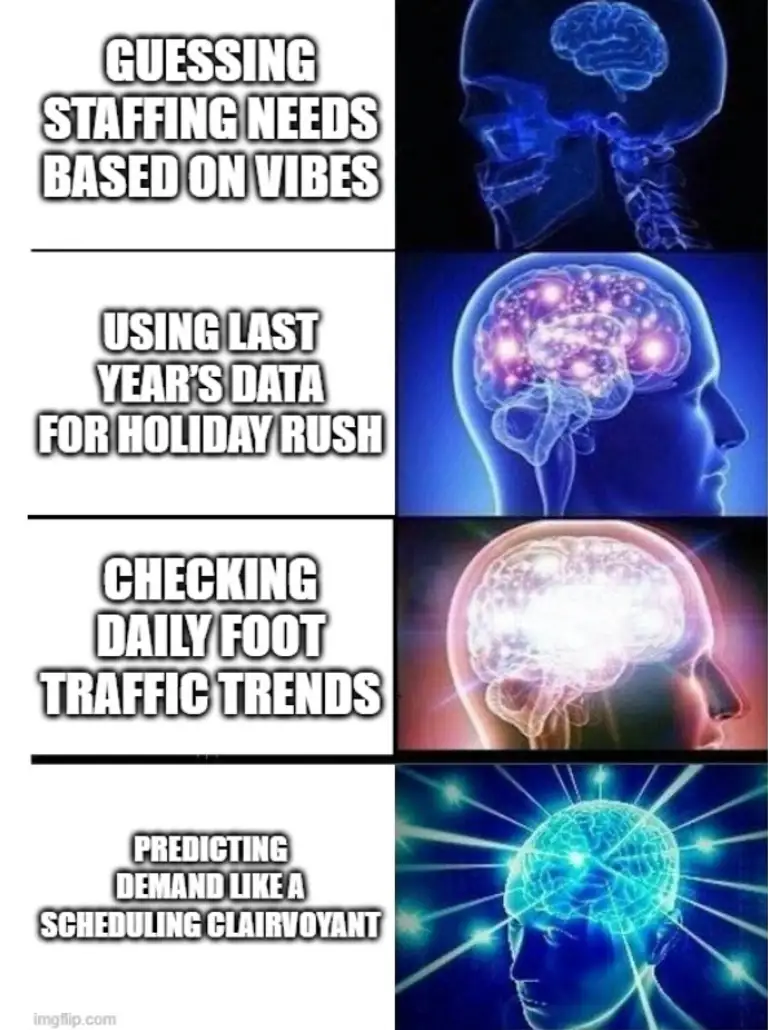
Implement fair and flexible schedules
80% of workers have little input into their schedules. Let's change that.
2/3 of retail employees take advantage of scheduling flexibility to balance priorities like attending school, working another job, or raising a family.
Flexibility matters, and it doesn’t have to mean chaos.
Think about rotating shifts, honoring staff preferences, and giving your team advance notice on shifts.
When retail employees know what to expect and feel they have a say, they’re more likely to stay and be satisfied. A fair retail schedule goes a long way toward creating a reliable, motivated team.
Example:
A part-time employee requests more hours during summer break, while another asks for fewer shifts to focus on school in the fall. The manager rotates shifts based on these preferences and schedules weeks in advance. Employees get the shifts they want when available, leading to a happier team and fewer last-minute scheduling issues.
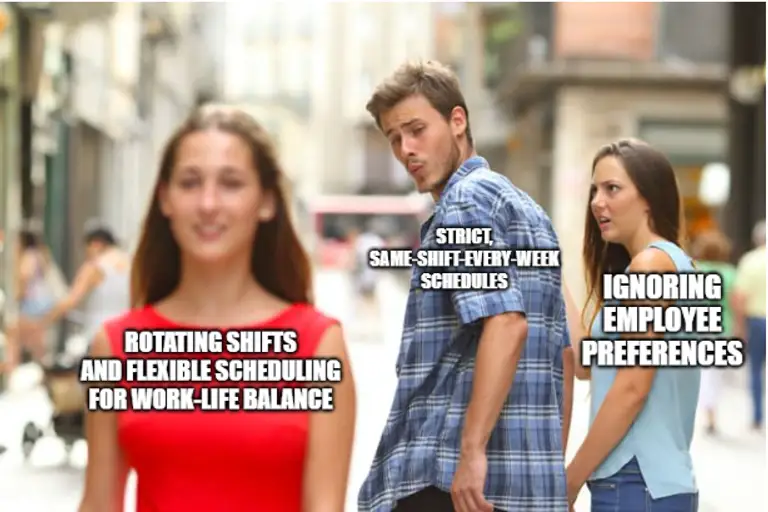
Use retail scheduling software
57% of retailers still manually set the weekly schedule. Employee scheduling software such as Unrubble can be a lifesaver and automate this process.
It can reduce manual errors and give everyone on your team a clear view of what’s coming up.
Using software creates transparency. Your team knows when they’re working and can plan their time accordingly. Plus, it’s a great way for retail managers to keep schedules organized without the headache.
Example:
The manager switches to scheduling software automatically, sending schedules to each employee’s phone. Now, everyone can check their shifts independently without needing to ask. Employees also receive automatic reminders before each shift, reducing no-shows and keeping everyone on the same page.

Avoid overstaffing and understaffing
46% of retailers say they’re frequently understaffed. Finding the sweet spot is critical.
Too many people on the floor can lead to idle time, while too few can result in chaos and burnout.
Think of it like a balancing act. Setting staffing levels based on your needs allows you to keep things running smoothly without wasting hours or running your team ragged.
Example:
The manager notices that three employees usually cover the shift on a weekday morning. However, traffic tends to be low, so they reduce it to two employees, saving labor costs.
Conversely, the manager increases the team to cover peak hours when the store is packed on weekend afternoons. This adjustment helps balance the workload and avoids having too many or too few people on the floor.
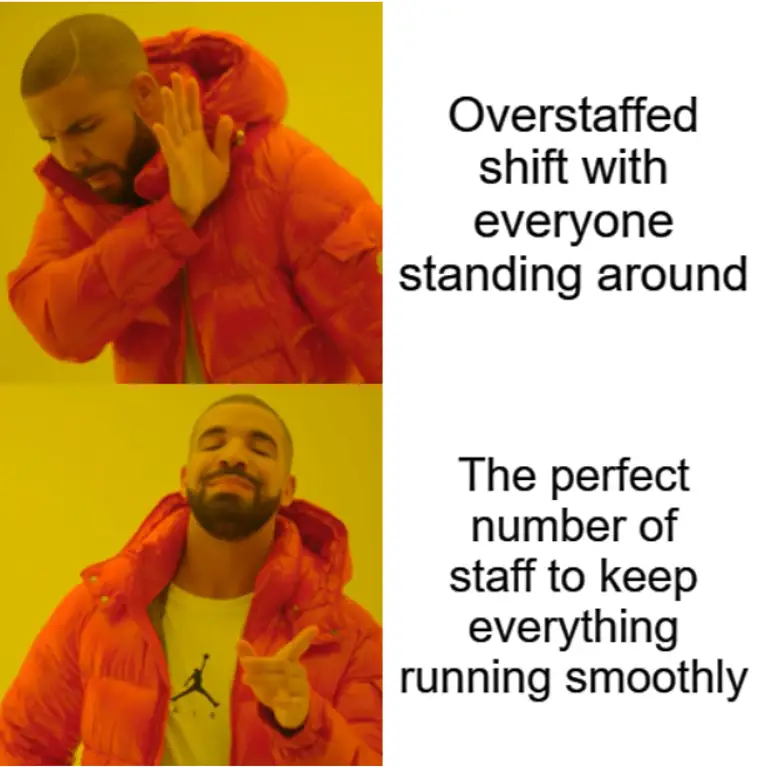
Listen to staff and encourage feedback
Keep an open door when it comes to scheduling concerns.
A quick check-in goes a long way. Make sure your team knows they can speak up about any conflicts or changes they need.
When retail employees feel heard, they’re more likely to address issues before they become problems. A little feedback can make a big difference.
Example:
An employee mentions that working closing shifts back-to-back leaves them too tired. The manager notes this and adjusts the schedule so the employee has more recovery time between shifts. Regularly checking in with the team helps uncover these issues and builds a supportive work environment.
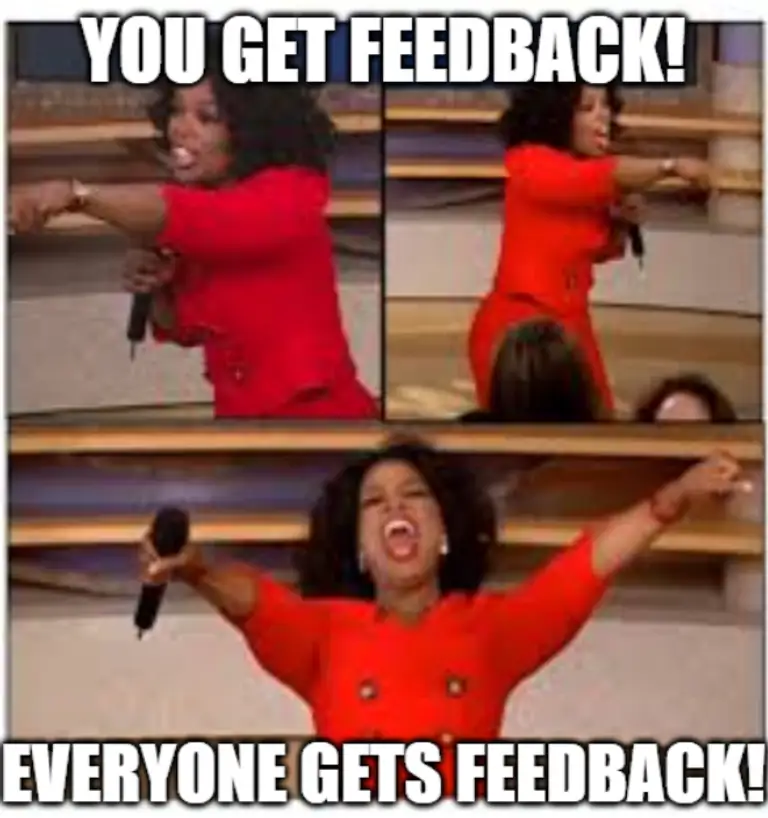
Cross-train staff for more flexibility
Companies are 17% more productive when employees get the training they need. Training your team to handle different roles is a game-changer.
When retail employees can contribute to various tasks, filling gaps is easier without putting too much on one person.
Plus, it makes your team more adaptable, which is a big help during busy periods or when you’re short-staffed.
Example:
A cashier is trained on the stockroom operations. One weekend, a stockroom team member calls in sick, and the cashier steps in to help restock the shelves. This cross-training allows the store to operate smoothly without scrambling to find last-minute help

Review schedules regularly and adjust
A great schedule is never “one and done.”
Take a look now and then at how things are running. Are customers getting what they need? Are employees happy with their hours?
Reviewing and adjusting based on what you see can improve operations for everyone involved.
Example:
The manager notices that mid-week evening hours have recently seen fewer customers. They reduce staff by one for these shifts and add more employees to busier weekend slots. By regularly assessing customer flow and staff availability, the manager keeps schedules efficient and responsive to demand.
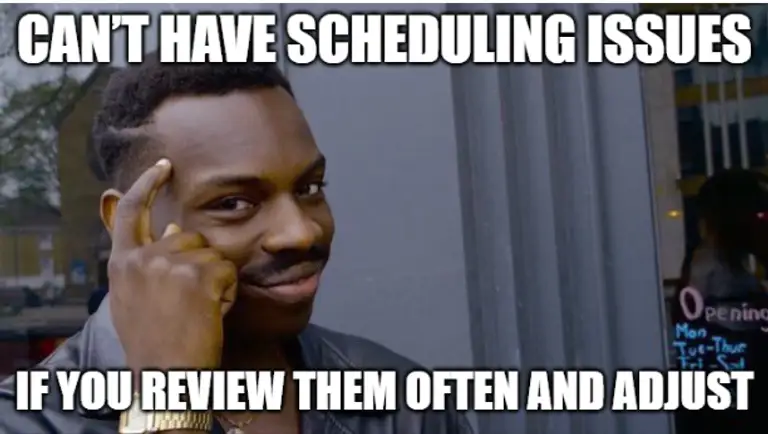
Provide consistent schedules
75% of retail workers want a more stable and predictable work schedule. When work schedules are predictable, life becomes more accessible for your team.
Try to keep shifts as regular as possible from week to week.
This allows retail employees to plan outside work, helping them stay happy and less likely to look elsewhere for more reliable hours.
Example:
The store’s manager tries to keep each employee on a similar weekly schedule, assigning them the same days and shifts as often as possible. This consistency helps employees know what to expect week to week, making it easier for them to plan around their personal lives and reducing call-outs or shift swap requests.
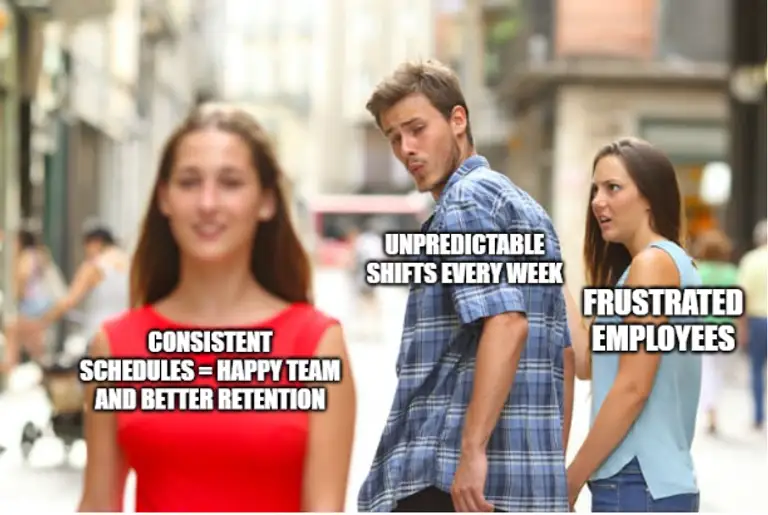
Plan for emergencies and last-minute changes
Life happens, and sometimes people can’t make their shift.
A backup plan - like an on-call list or a group of go-to people - keeps things rolling even when surprises occur.
This kind of preparation can save the day when you’re suddenly short-handed.
Example:
To prepare for unexpected absences, the manager creates an “on-call” list with a few employees who live nearby and can fill in. When a team member suddenly can’t make it, the manager calls one of these on-call employees, keeping the store fully staffed without a hitch.

Set clear rules for scheduling
Clear policies will help everyone understand the rules regarding time off, shift swaps, and breaks.
They will also ensure that your team knows precisely how scheduling decisions are made.
This is a simple way to keep things fair.
Example:
The manager establishes clear guidelines for shift swaps and time-off requests, such as requiring two weeks’ notice for PTO and having employees swap shifts directly through the scheduling app. Everyone on the team knows these rules, so there’s no confusion about what to do when they need a day off.

Schedule breaks and rest time well
Breaks aren’t just nice to have - they’re essential.
Plan regular, spaced-out breaks to keep energy levels up, especially on busy days.
When retail employees are rested, they’re more focused and ready to help customers, keeping both sides happy.
Check the break rules in your area to make sure you comply with the law:
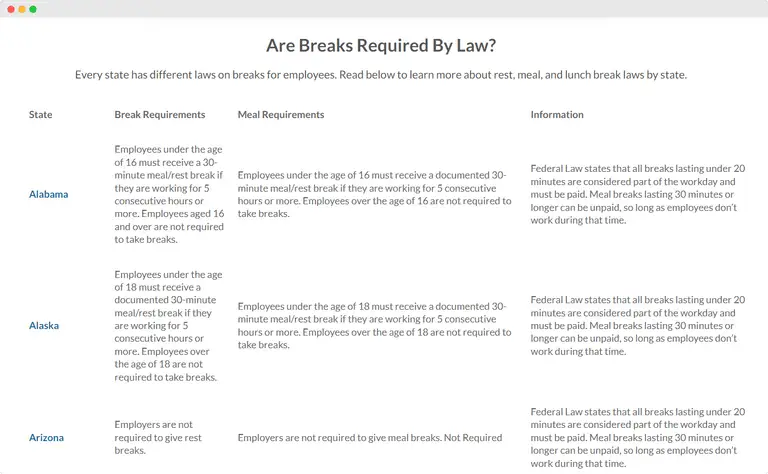
Example:
The manager schedules staggered breaks during the afternoon rush, so there’s always someone available to help customers. By planning breaks around busy periods, employees stay energized, and customer service doesn’t suffer from a lack of staff.
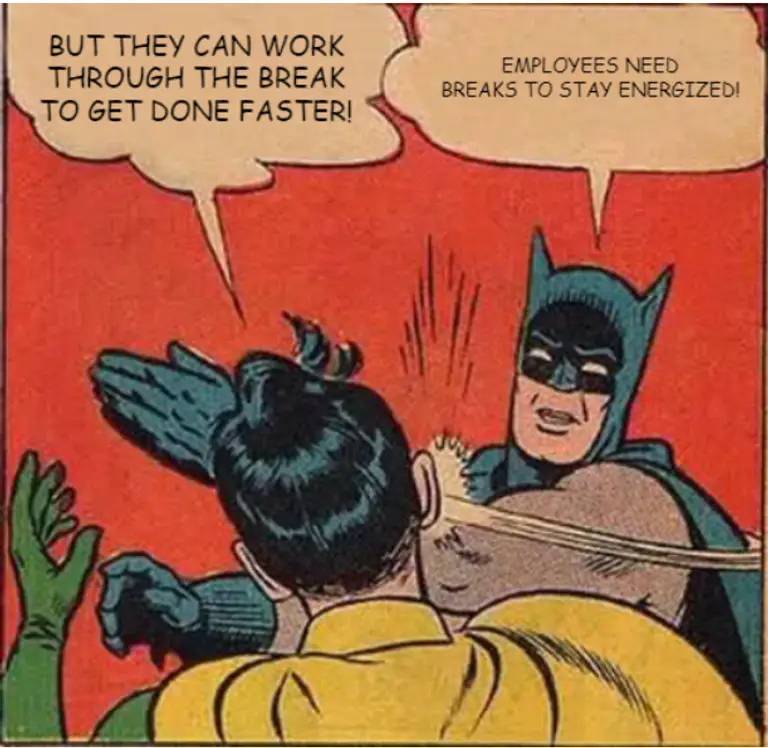
Reward flexibility with small perks
Show appreciation for employees who step up to cover extra shifts or stick around when it’s busy.
A little thank-you goes a long way, but there are more thoughtful ways to express it than just words.
Small rewards, like extra time off or a personal note, can show you notice and value their hard work.
Example:
When an employee agrees to cover a late-night shift at the last minute, the manager gives them a gift card or some extra break time next week as a thank-you. This small reward shows appreciation and encourages employees to step up when needed.

Rotate shifts fairly
Sharing the load, especially regarding weekend or evening shifts, helps prevent burnout.
By rotating these shifts moderately, everyone gets a break, and no one feels like they’re getting stuck with all the strict hours.
It’s a straightforward way to keep morale high and spread the effort.
Example:
To avoid burnout, the manager rotates weekend closing shifts so everyone has a chance to work the more popular daytime slots. The team stays motivated by sharing the less desirable shifts equally, and no one feels stuck with the most challenging hours.

Stay compliant and ethical about your retail schedule.
Keeping your retail schedule compliant with labor laws is fair to your team and will contribute to overall employee satisfaction.
Across the U.S., labor laws protect workers by setting rules on minimum shift hours, mandated breaks, and time off.
For example, many states require breaks after a set number of hours on the clock so your employees can catch their breath. While you may think all shifts should be at least a few hours, minimum shift laws in some places make it official, helping retail workers get a fair schedule and reliable pay.
There's an extra layer of protection in states with fair scheduling laws, like California and New York.
These laws can include things like advance notice for shifts, guaranteed rest periods, and “predictive scheduling,” which gives employees more control over their time.
Staying ahead of these rules is a good idea for any retail business. By meeting or exceeding these standards, you’ll avoid potential fines and build a workplace that respects everyone’s time and efforts.
Retail employee scheduling is made easy with Unrubble
If the scheduling process gives you a headache, Unrubble might just be the solution you’ve been looking for.
Unrubble transforms the usual scheduling chaos into an organized, easy-to-manage process.
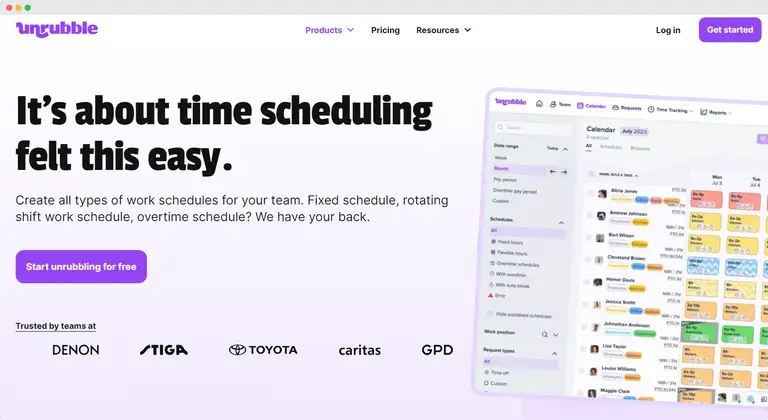
This isn’t just about setting shifts—it’s about engaging your team in the process and giving them control over their availability, PTO, and even shift swaps—all through a simple, real-time Employee Self-Service App.
From tracking time to managing PTOs and handling last-minute changes, Unrubble covers it all, and it’s “really-easy” to get started.
Whether you're planning for busy sales days in the retail industry or tracking who’s where, Unrubble helps you focus on what matters: keeping your team happy and your business running smoothly.
Don't wait - try it for free today.








